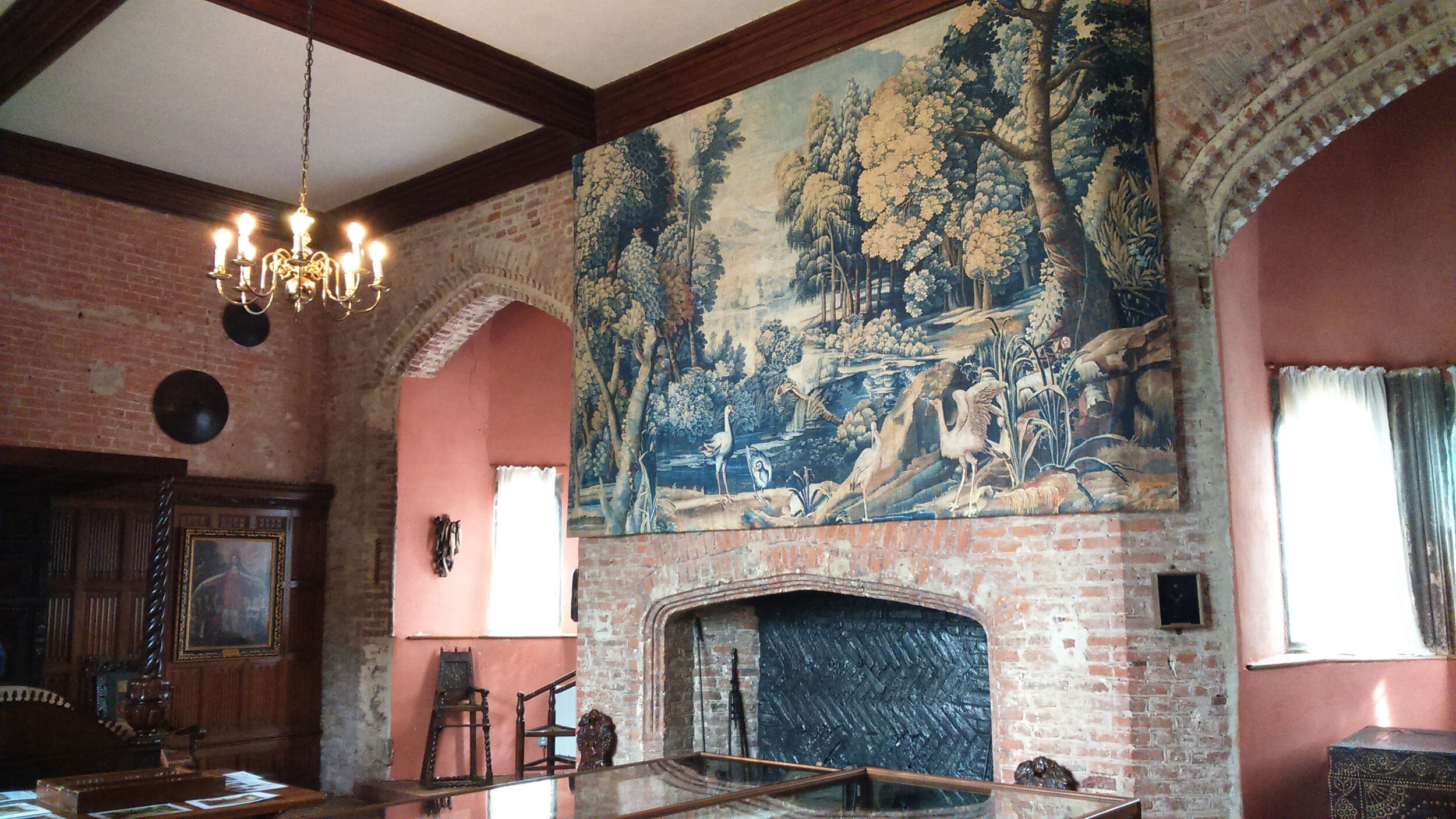Projects › Oxburgh Hall
Oxburgh Hall
Part I - Built by the Bedingfield family in 1482, during the War of the Roses, Oxburgh Hall has a wonderful Romantic, tudor style interior. Featuring heavily carved ancient woodwork, stained glass, armour, and embroideries worked by Mary Queen of Scots.
“When the 6th Baronet inherited Oxburgh Hall in the 19th century it was in a poor state of repair. He furnished the King’s Room with textiles and furniture to commemorate the visit of King Henry VII and his queen, Elizabeth of York, in 1487. He adorned the walls with 16th century ‘heirloom’ tapestries and dressed the bed with embroidered 16th century hangings, worked by Mary Queen of Scots and Bess of Hardwick, creating perhaps the most important ‘Romantic’ interior at Oxburgh.” The embroidered hangings remain on display, but the tapestries were sold in the 1920s.
Edward was joined by National Trust Curator, Anna Forrest, to research the lost tapestries and to help inform the creation of the new ones for the Kings Room. Anna revealed “After pouring over 19th century watercolours and sepia photographs from the archives it became apparent that the tapestries that originally hung at Oxburgh fell into two categories. Those that were early 16th century South Netherlandish scenes depicting kings, queens and courtly life, or those from the late 16th and 17th century that depicted ‘verdure’ and game parks. Our research also revealed that these tapestries were in fact a patchwork of tapestry scenes.”
For the first part of the project Edward and Anna were looking for tapestries to hang on South walls, where the subject matter was less distinctive than other tapestries in the room. Therefore, the National Trust were able to take advantage of tapestries already within the Zardi & Zardi’s portfolio: Verdure with Birds, on the chimney breast and two new verdures, from the National Trust’s Hardwick Hall, were sourced and used to flank the sides.
Edward Bartlett, House Manager at Oxburgh Hall, revealed: “Owing to the very high-resolution of photography involved, every stitch and every shadow of every stitch can be seen, which makes it very hard not to believe it’s an original part of the collection.
The first Tapestry to be rehung in the King’s Room. Photograph: National Trust
Part II - Following the success of the Verdure tapestries on the South wall of the King’s Room Oxburgh Hall commissioned Zardi & Zardi to produce further tapestries, for the East and West walls.
Old photographs and a watercolour by Matilda Bedingfeld (c.1850) show how the Victorian Bedingfelds celebrated the history of the room by decorating it in the ‘romantic’ style. A series of elaborate early 16th-century Flemish tapestries were hung above mock-Tudor panelling installed in 1863.
House Manager, Edward Bartlett, and curator, Anna Forrest searched similar collections at Hever Castle, the Victoria & Albert Museum and the Royal Collection and decided upon four source tapestries from which composite tapestries were created and made up into wall hangings.
Working with four completely different tapestries posed its problems. Usually Zardi & Zardi run a series of colour trials on receipt of a new digital image to match our printed versions as closely as possible to the original. With this project, it was also important that the tapestries sit together comfortably when seen together in the composites.
Anna Forrest was ‘absolutely delighted with the digital tapestries for Oxburgh. The colours are stunning, and they look really impressive. I cannot wait to get them up on the walls. Even laid out in a spare room they have incredible impact,'




